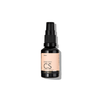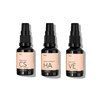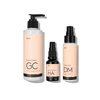6 Effective Ways to Treat Hair Loss in Women
Did you know It's normal to lose anywhere from 50 to 100 strands of hair daily? But what if you're losing more than that? What if your scalp is starting to show? You might be experiencing hair loss. Hair loss in women can be caused by a variety of things, including genetics, hormonal changes, and even stress. Luckily, there are ways that have been proven to treat hair loss, and most of them are simple! In this blog post, we will outline six methods for treating hair loss in women. We will also discuss the causes of hair loss in women so you can better understand what might be causing your case.

What causes hair loss in women?
There are many different factors that can contribute to hair loss in women. One of the most common causes is genetics. If you have a family member who has experienced hair loss, you may be more likely to experience it. Another common cause is hormonal changes. These can be due to things like pregnancy, menopause, or even thyroid issues. Stress is also a significant factor in hair loss for both men and women. If you've been through a recent trauma or life event, your hair loss may be due to stress.
Some causes of hair loss are self-inflicted. For example, regularly wearing your hair in a tight ponytail or braids can also lead to hair loss and is known as traction alopecia. In fact, many things women do to their hair to make it pleasing to the eye can affect the hair's health. This includes dyes, chemical treatments, blow dryers, and hair straighteners –– take care not to brush too harshly or aggressively rub your hair with a towel either.
How to prevent hair loss in women?
Luckily, there are some things that you can do to prevent hair loss or at least slow it down. Because there are so many causes of hair loss, you must speak with a doctor or dermatologist to figure out what will work best for you. They may recommend things like changing your diet, taking supplements, or using specific topical treatments.
1. Change your diet

One of the best ways to prevent hair loss is to ensure you get all the nutrients you need. This means eating a well-balanced diet that includes plenty of fruits, vegetables, and protein. Because our hair is made mostly of protein, and if we're not getting enough protein in our diet, our bodies will start to break down our existing hair in order to get the nutrients it needs. Also, make sure to stay hydrated by drinking plenty of water throughout the day.
2. Take supplements
There are a few different supplements that have been shown to be effective in treating hair loss. These include biotin, iron, and omega-3 fatty acids. Iron is essential for the production of hemoglobin, which helps to carry oxygen to the cells. Without enough iron, the cells cannot generate new hair. Biotin is another nutrient that is essential for healthy hair. Biotin helps the body to metabolise fat and carbohydrates, which are necessary for healthy hair growth. In addition, biotin helps to keep the hair strong and resilient. Discuss with your physician any deficiencies you might have so they can recommend the right supplement for you.
3. Use specific topical treatments
Topical treatments can be very effective in treating hair loss. One of the most popular options is minoxidil, which is available over the counter. While there are many products on the market that claim to help with hair loss, minoxidil is one of the few that has been clinically proven to be effective. Minoxidil is a topical solution that is applied directly to the scalp and is available without a prescription. It works by increasing blood flow to the hair follicles and stimulating new hair growth. In studies, minoxidil has been shown to be effective in reversing hair loss and promoting new hair growth. If you are struggling with hair loss, talk to your doctor about whether minoxidil may be right for you.
4. Try low-level laser therapy
Low-level laser therapy is a relatively new treatment for hair loss that uses lasers to stimulate hair growth. LLLT uses focused light to stimulate hair growth by increasing blood flow to the scalp and promoting cell regeneration. In clinical studies, LLLT has been shown to be effective in treating hair loss in women. In addition, LLLT is a safe, non-invasive treatment option with few side effects. If you are struggling with hair loss, talk to your doctor about whether LLLT may be right for you.
5. Platelet-rich plasma therapy
Platelet-rich plasma therapy is a treatment that uses the patient's own blood to stimulate hair growth. The patient's blood is drawn and then placed in a centrifuge, which separates the platelets from the other blood cells. The platelets are then injected into the scalp, where they release growth factors that promote hair follicle regeneration and strengthen existing hair strands. A study published in the International Journal of Trichology found that PRP was effective in treating female pattern hair loss, and there is evidence that it may also be helpful for other types of hair loss. PRP is thought to be most effective when used in combination with other hair loss treatments, such as minoxidil.
6. Microneedling
Microneedling is a treatment that uses fine needles to create tiny punctures in the skin. This triggers the release of growth factors that promote healing and tissue regeneration. Microneedling has been shown to be effective in treating a variety of skin conditions, including hair loss. In one study, microneedling was shown to increase hair density in women with androgenetic alopecia. It is thought that microneedling may work by stimulating the release of growth factors and by increasing blood flow to the hair follicles.
As you can see, there are a number of different ways to treat hair loss in women. If you're experiencing hair loss, speak with your doctor or dermatologist to figure out what the best option is for you.








